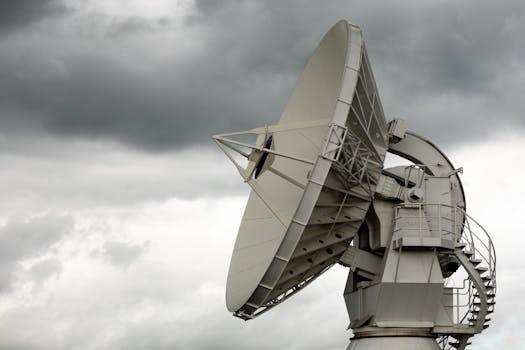GEO Satellites: Unlocking the Power of Geostationary Orbit

GEO Satellites: Unlocking the Power of Geostationary Orbit
GEO satellites, or Geostationary satellites, are a type of satellite that orbits the Earth at an altitude of approximately 36,000 kilometers, allowing them to remain stationary relative to a fixed point on the planet. This unique characteristic makes GEO satellites an essential part of modern satellite technology, providing a wide range of services including telecommunications, weather forecasting, and navigation.
How GEO Satellites Work
GEO satellites work by using a combination of propulsion systems and gravity to maintain their position in geostationary orbit. They are typically launched into space using a rocket and then use their own propulsion systems to reach their desired altitude and orbit. Once in orbit, the satellite uses its thrusters to make small adjustments to its position, ensuring that it remains stationary relative to a fixed point on the Earth.
Applications of GEO Satellites
GEO satellites have a wide range of applications, including telecommunications, weather forecasting, and navigation. They are used by television broadcasters to transmit signals to viewers around the world, and by telecommunications companies to provide internet and phone services to remote areas. Weather forecasting agencies use GEO satellites to monitor cloud patterns and track storms, while navigation systems such as GPS rely on GEO satellites to provide location information to users.
Benefits of GEO Satellites
The benefits of GEO satellites are numerous. They provide a wide range of services that are essential to modern life, including telecommunications, weather forecasting, and navigation. They also offer a number of advantages over other types of satellites, including their high altitude and stationary position, which allows them to provide continuous coverage of a particular area. Additionally, GEO satellites are often less expensive to launch and maintain than other types of satellites, making them a cost-effective option for many applications.
Challenges Facing GEO Satellites
Despite the many benefits of GEO satellites, there are also a number of challenges facing the industry. One of the main challenges is the increasing amount of space debris in geostationary orbit, which can pose a risk to operational satellites. Additionally, the launch and operation of GEO satellites are subject to a number of regulatory requirements, which can be complex and time-consuming to navigate. Furthermore, the demand for GEO satellites is increasing, which can lead to congestion in geostationary orbit and make it more difficult to launch new satellites.
Future of GEO Satellites
Despite the challenges facing the industry, the future of GEO satellites looks bright. Advances in technology are making it possible to build more efficient and capable satellites, while new applications such as satellite-based internet and Earth observation are emerging. Additionally, the development of new launch systems and the increasing use of reusable rockets are making it more affordable to launch satellites into space. As the demand for satellite services continues to grow, it is likely that GEO satellites will play an increasingly important role in meeting this demand.




